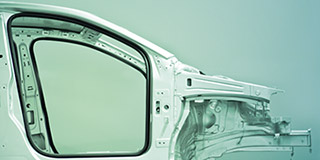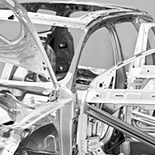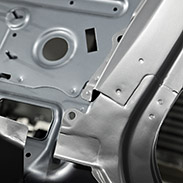

Unibody Construction
STRUCTURAL INTEGRITY
The predominant contruction for auto frames is the Unibody or “Unit Body” design for high strength support frames. The unibody construction integrates the auto body with the chassis into a single unit differing from body-on-frame construction that bolts a separate body to a frame. This technique makes it possible to incorporate light weight fabrication materials for aerodynamics and greater gas mileage, while at the same time yielding more balanced load bearing and greater strength. The design increases a vehicle’s stability at higher speeds and overall performance handling.
PINPOINTING METAL FATIQUE AND STRESS
After an accident, you should have your auto frame evaluated to ensure its capability to provide structural support in case of future impacts or pressure. What we look for are stress points and metal fatigue that will not withstand impact damage properly to meet safety standards. When unibody damage occurs often structural components are replaced versus being repaired, unless the damage is slight and does not involve the unit components being “kinked.” Replacement, in most cases, provides the greatest degree of structural integrity because the materials are not compromised.
Damage to the unibody frame may weaken the metal and cause fatigue that make the frame more prone to being crushed again and less resistant to exerted force. If the frame or a portion can be straightened, the process may require heating to make the metal malleable. This is when expertise in specific temperature and specified duration of material exposure is truly necessary to avoid adverse effects on the frame support losing its temper and strength.
Damage to a vehicle can be much more extensive if the strength of the vehicle is diminished by not following manufacturer procedures for your model or performing knowledgeable repair with structural integrity as a focal point.
